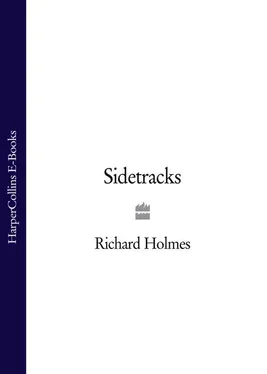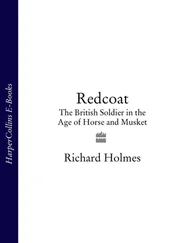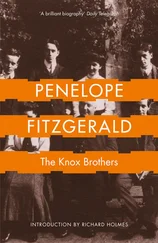Colston served him in two ways. First by providing an embryo group of friends, or at least acquaintances, in whom he could begin to satisfy his need for notice and applause. And second, in failing to weigh his mind down with any academic material of the depressing kind which such establishments are formally designed to provide, but rather allowing him freedom to pursue his own private and increasingly idiosyncratic reading and research. His sister, Mrs Newton: ‘About his tenth year he began (with the trifle my mother allowed him for pocket-money) to hire books from the circulating library … Between his eleventh and twelfth year, he wrote a catalogue of the books he had read, to the number of seventy: History and Divinity were the chief subjects. At twelve he was confirmed by the Bishop … Soon after this, in the week he was door-keeper (at Colston), he made some verses on the last day, I think about eighteen lines; paraphrased the ninth chapter of Job; and not long after, some chapters in Isaiah. He had been gloomy from the time he began to learn, but we remarked he was more cheerful after he began to write poetry. Some satirical pieces we saw soon after.’ Now he was started.
Chatterton left Colston some time in the winter of 1766, or the spring of 1767; at any rate when he had turned fourteen. Before that time had come, a number of events occurred whose significance was great but indirect. He formed a close friendship with a boy somewhat older than himself, Thomas Phillips. The relationship was to be tragically short, but Phillips was one of those invaluable personalities, a catalyst. A school-friend gave this typically portentous picture: ‘The poetical attempts of Phillips had excited a kind of literary emulation amongst the elder classes of the scholars; the love of fame animated their bosoms, and a variety of competitors appeared to dispute the laurel with him.’ This helped; it was the first materialization of Chatterton’s company of poets. Related to it, the death of the brilliant contemporary satirist, Charles Churchill, who had gone to visit Wilkes (exiled in Boulogne on account of the notorious No. 45 of the North Briton), served to give the young writers both a literary and political martyr. Churchill died in 1764. In the following year there was a notable publishing event, the appearance in three duodecimo volumes of Percy’s celebrated Reliques of Ancient English Poetry. These certainly came into Chatterton’s hands, one of the primary texts of the Romantic revival. So the hidden medieval world was nourished as well.
When Chatterton left Colston, he was extremely lucky to be apprenticed to a Bristol attorney, John Lambert Esq. He took up the job in July 1767. It was a remarkable success for an ex-Colston boy; but in practice it involved mere clerical copying and drudgery, and Chatterton did not find himself occupied fully for more than two or three hours a day. He continued to haunt the circulating libraries; he took to walking certain young ladies on the green; and most important of all, he began to take old St Mary Redcliff papers and parchments with him to work. Friends referred to vague ‘copying’ and ‘transcribing’ processes. He covered many parchment scraps with his own version of medieval script. He became fascinated by architecture and heraldry and the business of family trees. These subjects also fascinated Thomas Rowley. For Rowley now existed.
After such a long gestation, things moved quickly. The main external events were as follows. In July 1768, the old bridge across the river Avon was replaced by a new one, and Chatterton, making his first of many bids for fame, sent a fictitious account of the opening of the original bridge, purporting to have been drawn from a medieval manuscript, to Felix Farley’s Journal. The Journal was the local Bristol magazine and gossip column, and the publication of his contribution soon brought two Bristol littérateurs, George Catcott and William Barrett, snuffling on to the young man’s trail. Catcott and Barrett are two wholly comic figures, part fools and part villains, who stumble through this period of Chatterton’s career as if Laurel and Hardy had tried to organize the Fourth Act of Hamlet. For the next eighteen months they pose as Chatterton’s patrons, lending him books and showing him off to their friends at numerous little soirées, while encouraging him to bring forth a stream of letters, ballads, elegies and dramatic poetry, all also purporting to be medieval: notably the work of the fifteenth-century writers who surrounded William Canynges in Bristol, and above all of the poet-monk and intimate of Canynges – Thomas Rowley. (Barrett was writing a History of Bristol, and for him Chatterton conveniently produced descriptions of medieval painting and architecture, grotesque family trees, and gorgeous examples of local heraldic devices – all spurious.)
One of the finest of the early Rowley productions was this fragment which praised St Mary Redcliff and its great restorer William Canynges. It is of particular interest in that it performs a strange transmutation of the ‘Sly Dick’ poem; it is a vision and a supernatural command, but this time the opposite of Satanic. Moreover, in using the same short four-stress line and rhyming couplets, it yet manages to produce a simplicity quite literally worlds away from ‘Sly Dick’s’ satiric jingle. ‘Onn Oure Ladies Chyrche’ by Thomas Rowley–
As on a hille one eve sittinge,
At oure Ladies Chyrche muche wonderinge,
The cunninge handieworke so fine
Han well nighe dazzeled mine eyne.
Quod I: some cunninge fairy hande
Yreer’d this chapelle in this lande;
Full well I wot, so fine a sighte
Was n’ere yreer’d of mortal wighte.
Quod Truth: thou lackest knowledgynge;
Thou forsooth ne wotteth of the thinge.
A Rev’rend Fadre, William Canynge hight [called]
Yreered up this chapelle bright;
And eke another in the Towne
Where glassie bubblinge Trymme doth roun.
Quod I: ne doubt for all he’s given
His soule will certes goe to heaven.
Yea, quod Truth, then go thou home
And see thou do as he hath done.
Quod I: I doubte, that can ne be,
I have ne gotten markes three.
Quod Truth: as thou hast got, give almes-deeds so:
Canynges and Gaunts could do ne moe.
This and many other small pieces, together with the brilliant narrative ballad ‘The Death of Sir Charles Bawdin’, the two poetic tragedies ‘Godwyn’ and especially ‘Æella’ (of which the famous and beautiful Minstrel’s Song is a mere chorus), and numerous Epistles, Prologues and Songs, were all accepted blandly and beamingly by Catcott and Barrett who never dreamed of looking a gift-horse let alone a prodigy in the mouth; they calmly accepted everything as genuine curios and antiquities pouring forth in a gratuitous flood at their feet, as if young Chatterton were the keeper of some magic casket of inexhaustible delights. It never seemed to cross their minds that beauty is the most terrible and merciless of masters. Mrs Newton: ‘He was introduced to Mr Barrett and Mr Catcott; his ambitions increased daily. His spirits were rather uneven, sometimes so gloom’d, that for many days together he would say but very little, and that by constraint. When in spirits, he would enjoy his rising fame; confident of advancements, he would promise my mother and me should be partakers of his success … About this time he wrote several satirical poems, one in the papers, on Mr Catcott’s putting the pewter plates in St Nicholas towers. He began to be universally known among the young men. He had many cap acquaintances, but I am confident few intimates.’ ‘Many cap acquaintances’ is apt. The role of the satirical poetry was now becoming obvious; it kept him on balance in a situation fluctuating violently between tragedy and farce which only an English provincial city with its mixture of greed, pomposity and eloquent mediocrity could ever have provided.
Читать дальше












